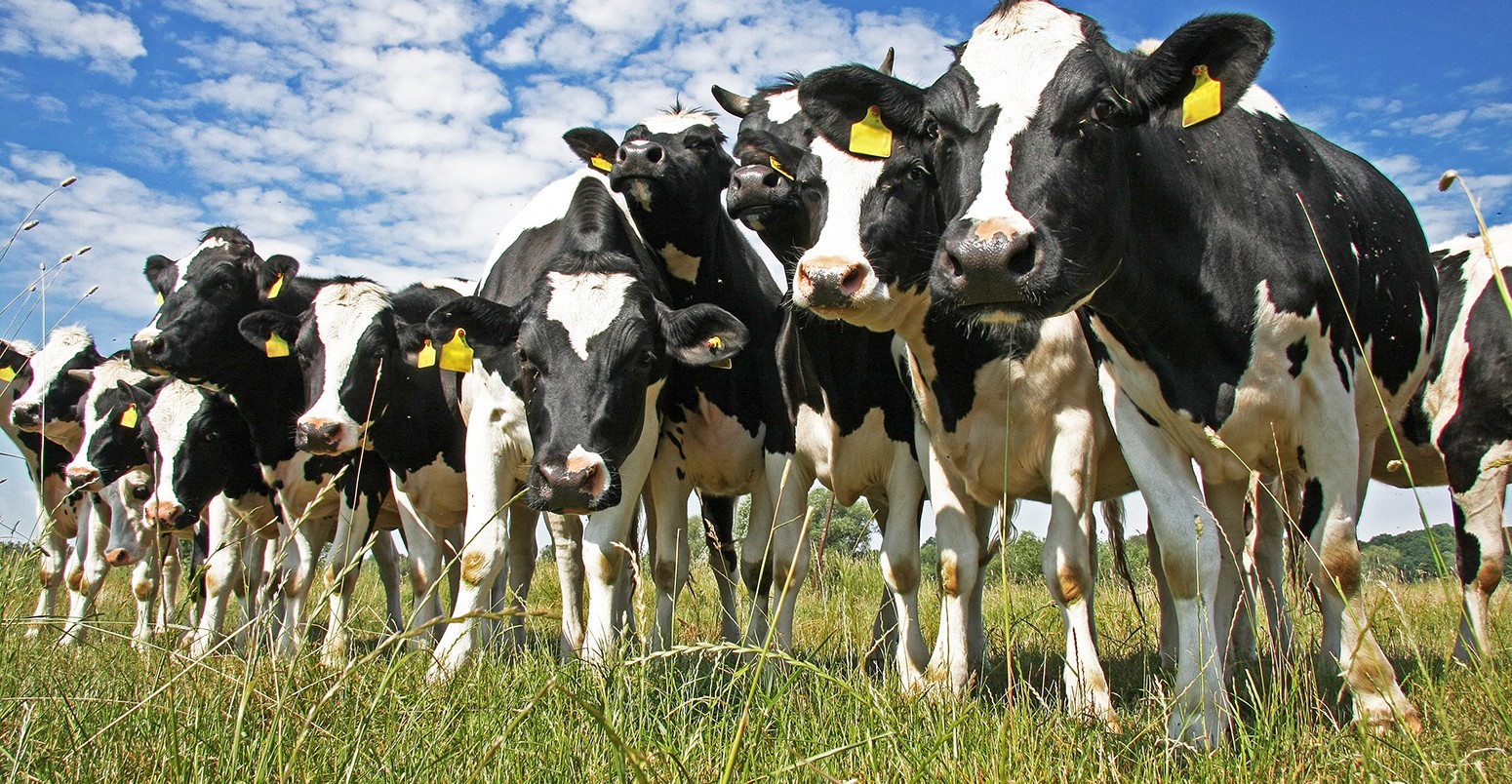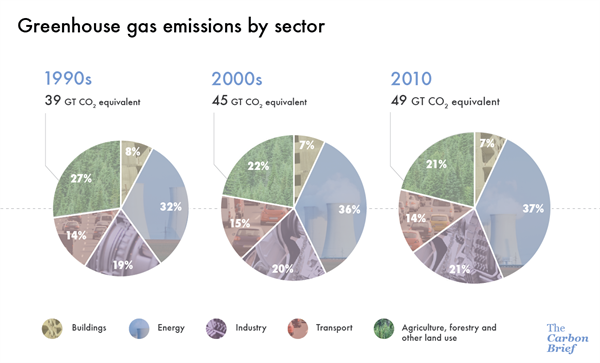
Farming overtakes deforestation and land use as a driver of climate change
Robert McSweeney
01.12.15Robert McSweeney
12.01.2015 | 5:11pmGreenhouse gas emissions from growing crops and raising livestock are now higher than from deforestation and land use change, a new study finds.
The research, published in Global Change Biology, estimates the contribution of agriculture, deforestation and land use change to global emissions. While the emissions of the sector as a whole are dropping, emissions from agriculture are still on the rise, the research says.
A smaller slice of a larger pie
The new study combines three global datasets of greenhouse gas emissions for the ‘Agriculture, Forestry and Other Land Uses’ (AFOLU) sector. It includes emissions from human activities, such as cutting down trees, clearing and burning biomass, and from raising and feeding livestock.
The data also include the carbon emissions that the sector removes from the atmosphere, such as from planting more trees.
Whether the actual emissions are of carbon dioxide, methane or nitrous oxide, the figures are all converted into figures of ‘carbon dioxide equivalent’, which makes them easier to compare.
As a whole, the sector takes up a decreasing share of total manmade emissions, the study finds. In the 1990s, AFOLU was responsible for around 29 per cent of our emissions, but this dropped to 24 per cent in the 2000s and then to 21 per cent in 2010.
There are two reasons for this: first, emissions from deforestation and land use change have fallen over the past two decades, and second, the overall total of manmade greenhouse gas emissions are growing.
The result is that AFOLU is responsible for a decreasing share of a growing global emissions pie. You can see this is the infographic below, which shows the figures for one of the three datasets that the study uses.

Greenhouse gas emissions by sector for the 1990s, 2000s, and then 2010. Credit: Rosamund Pearce, Carbon Brief. Figures taken from Tuiello et al. (2015) using the FAOSTAT dataset only.
Deforestation emissions falling, but agriculture rising
Within the AFOLU sector, the study shows that while emissions from deforestation and land use change are dropping, emissions from agriculture are on the increase.
On average, cutting down trees and clearing land contributed the equivalent of 6.4 gigatonnes (Gt) of carbon dioxide to the atmosphere each year of the 1990s. This fell to 5.4 Gt in the 2000s and to 4.9 Gt in 2010, the study finds.
In comparison, global emissions from crop and livestock production rose from 4.8 Gt in the 1990s, to 5.2 Gt in the 2000s and to 5.4 Gt in 2010. Emissions from agriculture are growing at around one per cent per year, the study estimates.
The news follows a recent global survey by Chatham House that Carbon Brief reported, which identified a lack of awareness about the size of greenhouse gas emissions from meat and dairy production.
Less than a third of people surveyed thought that it makes a large contribution to climate change, despite meat and dairy having a carbon footprint larger than all the cars, trains, planes and ships in the world, Chatham House says.
With the likes of the Intergovernmental Panel on Climate Change including agriculture as part of the wider AFOLU group, the new study shows why it’s necessary to look into the detail of how and where emissions are changing.
Main image: Cows on farmland.
Tubielli, F.N. (2015) The contribution of agriculture, forestry and other land use activities to global warming, 1990-2012: Not as high as in the past, Global Change Biology, doi: 10.1111/gcb.12865
-
Farming overtakes deforestation and land use as a driver of climate change

